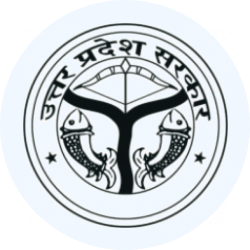Panchayati Raj System in Uttar Pradesh and Urban Local Bodies | Course for UPPSC Preparation - UPPSC (UP) PDF Download
Local self-government involves the management of a locality such as a city, town, village, or community. In Uttar Pradesh, local self-governance is divided into Urban and Rural components, known as Panchayati Raj, which encompasses various segments to facilitate the governance of the state.
The Uttar Pradesh local self-government holds a significant role in the state's governance, striving to create a better society for its people.
Panchayati Raj System in Uttar Pradesh
The Panchayati Raj System in Uttar Pradesh was established on August 15, 1947, through the Uttar Pradesh (United Province) Panchayati Raj Act, 1947. Constitutionalized by the 73rd Constitutional Amendment Act of 1992, it follows a three-tier structure comprising Village Panchayat, Block Panchayat, and District Panchayat. This system, based on the recommendations of the Balwantrai Mehta Committee, was enacted in 1961-62 as per the directives of the Central Government.
The three tier Panchayati Raj System of Uttar Pradesh is as follows:
District Panchayat
- The top body in the three-tier system.
- Its Chairperson and Deputy Chairperson are elected by District Panchayat members.
- Committees like Administrative, Planning and Development, Educational, Construction Work, Health and Welfare, and Water Management are formed.
e-District Project
It is the mission mode project to ensure the delivery of high volume citizen centre services using multiple delivery channels such as directly through internet, Common Service Centre (CSC), mobile app, etc. in efficient transparent way. In Uttar Pradesh, e - District project was implemented in January, 2009.
UP was the first state in country to successfully roll out e- District scheme in six districts (Gautam Buddh Nagar, Ghaziabad, Sultanpur, Sitapur, Gorakhpur and Raebareli). In 2010, it has been implemented in the entire state.
Block Panchayat (Kshetra Panchayat)
- An intermediate level in the system.
- Chairperson is elected by Kshetra Panchayat members elected by Gram Sabha.
- Committees are established at this level as well.
Gram Panchayat (Village Panchayat)
- The lower level in the three-tier structure.
- Sarpanch (Gram Pradhan) heads the Village Panchayat, directly elected by adult Gram Sabha members.
- Village Panchayat members are directly elected by Gram Sabha members.
- Village Panchayat oversees basic amenities in the village under the Sarpanch's supervision.
Urban Local Bodies
Additionally, the Urban Local Bodies in Uttar Pradesh are categorized under the Uttar Pradesh Town Area Act of 1914, the Uttar Pradesh Municipalities Act of 1916, and the Sub Local Self Government Law Act of 1994. The Urban Local Bodies are divided into Municipal Corporation (Nagar Nigam), Municipal Council (Nagar Palika), and Nagar Panchayat, each serving specific population ranges.
Municipal Corporation (Nagar Nigam)
- Established in major urban areas with a population between 5 lakhs and 10 lakhs.
- Comprises a Mayor, Deputy Mayor, and three categories of Councillors.
- Mayor is elected for 5 years, and Deputy Mayor is elected for 1 year.
- Nominated Councillors are appointed by the State Government.
Municipal Council (Nagar Palika)
- Set up in areas with a population between 1 lakh and 5 lakhs.
- Includes a directly elected Chairman/President, Deputy Chairman/Vice-President, and three members.
- Elected members' strength ranges from 25 to 55, and there are nominated members as well.
Nagar Panchayat
- Established in areas with a population between 15 thousand and 1 lakh.
- Consists of a committee with a Chairman/Mayor and ward members.
- Reserved seats for Scheduled Castes, Scheduled Tribes, backward classes, and women.
- Elected members' strength ranges from 10 to 24, with 2 or 3 nominated members.
|
114 videos|362 docs|105 tests
|
FAQs on Panchayati Raj System in Uttar Pradesh and Urban Local Bodies - Course for UPPSC Preparation - UPPSC (UP)
| 1. What is the Panchayati Raj System in Uttar Pradesh? |  |
| 2. What are the functions of Gram Panchayats in Uttar Pradesh? |  |
| 3. How are members of Gram Panchayats elected in Uttar Pradesh? |  |
| 4. What is the role of Block Panchayats in Uttar Pradesh? |  |
| 5. How does the Panchayati Raj System promote grassroots democracy in Uttar Pradesh? |  |






























